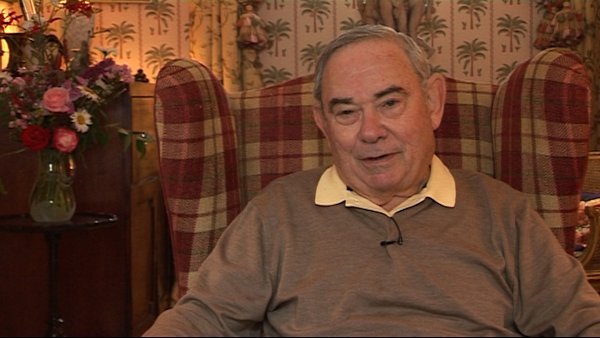NEXT STORY

Why are cancer cells immortal?
RELATED STORIES

NEXT STORY

Why are cancer cells immortal?
RELATED STORIES



There are three major streams of information that now come together. The first information or area of research was my discovery that human and animal cells have a finite capacity to divide or replicate in culture, and probably in vivo that is within the body itself, although I won't address that subject.
And the second area of research was the problem of what we called the 'three-prime overhang in DNA', which is the technical term, which means that as DNA replicates, as each round of cell division occurs, the mystery was that the DNA molecule would become shorter and shorter and shorter. And that implied that genes would be lost at each round of division if this happened, and so we knew genes weren't lost and there must be an explanation for that. It was Alexey Olovnikov, the Russian scientist, who, in an armchair, dreamt up an explanation for this phenomenon and I believe... and I described that earlier. That was also an effort to understand... that was also made by James Watson, the discoverer of DNA, the structure of DNA.
And a third area was what I just described, and that is the discovery by Calvin Harley and Carol Greider, who had this accidental meeting at McMaster University in Canada, to look at my cell system in respect to the behaviour of the telomeres, that is the structures at the ends of chromosomes that she was expert in. And lo and behold, she and Calvin Harley discovered that as the cells divide and get closer and closer to the point where they stop dividing, the telomeres, which are structures at the ends of the chromosomes so they're quite long, become shorter and shorter and shorter. And because they contain only nonsense information, they behave like a buffer, and consequently as they are lost at each round of division, it has no consequence in respect to the... any danger to the genes in the rest of the chromosomes. But what it does have an effect on is that as it... as these telomere structures are lost at each round of division and they get closer and closer to the DNA, the active and important DNA itself, they... it apparently triggers events downstream that tell the cell to stop dividing. It also tells the cell to do a lot of other things, but those are too detailed, but the major thing is that they tell the cell to stop dividing.
Leonard Hayflick (b. 1928), the recipient of several research prizes and awards, including the 1991 Sandoz Prize for Gerontological Research, is known for his research in cell biology, virus vaccine development, and mycoplasmology. He also has studied the ageing process for more than thirty years. Hayflick is known for discovering that human cells divide for a limited number of times in vitro (refuting the contention by Alexis Carrel that normal body cells are immortal), which is known as the Hayflick limit, as well as developing the first normal human diploid cell strains for studies on human ageing and for research use throughout the world. He also made the first oral polio vaccine produced in a continuously propogated cell strain - work which contributed to significant virus vaccine development.
Title: Key areas of my research and other relevant discoveries
Listeners: Christopher Sykes
Christopher Sykes is a London-based television producer and director who has made a number of documentary films for BBC TV, Channel 4 and PBS.
Tags: McMaster University, Alexey Olovnikov, James Watson, Calvin Harley, Carol Greider
Duration: 3 minutes, 36 seconds
Date story recorded: May 2013
Date story went live: 14 June 2013